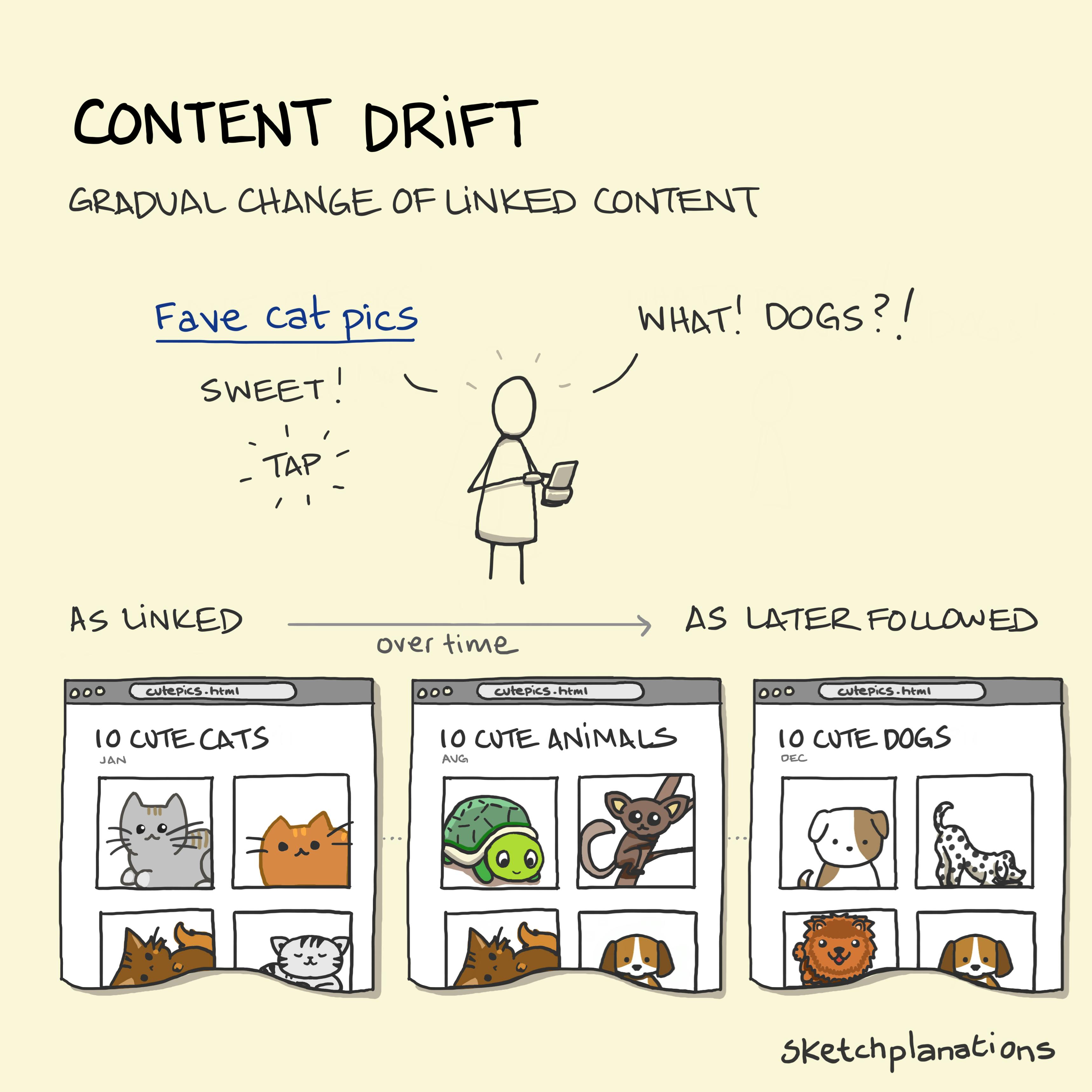
Content drift
Content drift is how a piece of linked content may change over time such that what was once linked may in fact now be very different. An article you link to may be corrected, opinions may be changed, content may be expanded or removed, a paywall may be put in the way, and yet the link keeps steadfastly pointing. Content drift, along with link rot — pages being lost — is one of the ways that the information we have come to rely on on the internet can be gradually undermined. Here's a thread on content drift and link rot from Harvard's Jonathan Zittrain — at least, it was a thread on it when I wrote this. Also see: The Internet is Rotting.…Content drift is how a piece of linked content may change over time such that what was once linked may in fact now be very different. An article you link to may be corrected, opinions may be changed, content may be expanded or removed, a paywall may be put in the way, and yet the link keeps steadfastly pointing. Content drift, along with link rot — pages being lost — is one of the ways that the information we have come to rely on on the internet can be gradually undermined. Here's a thread on content drift and link rot from Harvard's Jonathan Zittrain — at least, it was a thread on it when I wrote this. Also see: The Internet is Rotting.WWW…
Read more…





